 FACT: You will encounter challenging people.
FACT: You will encounter challenging people.
They might come in the form of strangers.
They might come in the form of customers.
They might EVEN come in the form of colleagues or friends!
They will try to overpower you.
They will try to intimidate you.
They will try to get a rise out of you.
They will make blunt or rude comments.
They will ask pointed or threatening questions.
They will attempt to activate your defensiveness.
And you will have a choice.
To either REACT:
By getting upset, overly emotional or defensive.
Which is exactly what they want.
Because deep down, they know that’s the only way they can beat you.
Or, to RESPOND:
By reversing their momentum.
Which is the exact opposite of what they’re expecting.
Because deep down, they know that if you refuse to take ownership of their emotions, they’re toast.
Kind of like the playground bully, whose ONLY power comes from other kids’ fear of him.
So, next time you face a challenging person, remember:
The key is to relax.
The key is to lower the temperature of the situation.
The key is to remain emotionally unreactive, yet still invested in the conversation.
IN SHORT: If you want to reverse someone’s momentum, it’s all about patience and language.
Today we’re going to explore a list of 10 Phrases That Payses to positively change the dynamic of a conversation with an overly aggressive or hostile person:
1. You’re right. This phrase allows you to enter into another person’s reality. It shows an open mindedness to different opinions and redirects the conversation into a productive direction.
It also acknowledges someone else’s unique point of view. Ultimately, these four results are empathetic and help diffuse emotionally charged individuals.
2. You may be right. Similar to the above example, this phrase diffuses the energy behind someone’s attack AND avoids threatening the attacker. And by giving an impression of active agreement, not passive acquiescence, it avoids adding fuel to the fire.
What’s more, “You may be right” validates a particular part of someone’s argument. Which doesn’t mean you TOTALLY agree with her. But, it does make it easier for the other person to hear your side of the story by way of reciprocation.
3. I agree with you. Similarly, this phrase “agrees with thy adversary quickly,” as the old scripture suggests. It builds common ground on a point of mutual agreement and aligns you with the other person. That way, you’re both on the same side.
Which is how resistance dissipates. Which makes moving toward a solution flow a LOT smoother.
4. Why is that so important to you? This gem is especially effective when someone shoots down EVERY idea you suggest. It identifies a person’s motives and challenges them to honesty examine their emotions, which, if they’ve lashed out at you, probably isn’t something they’ve done yet.
5. Why do you want to know so badly? Similarly, this phrase helps uncover the motivations of someone who seems bit too persistent. Maybe even bordering on pushy.
For example, if a person you’ve just met asks you LOTS of probing questions on the same topic, or constantly asks you the same question over and over again, maybe it’s time to step back and ask why.
6. You must be having a really bad day. Unexpected and empathetic. Demonstrates concern, especially with an irate customer. Also, this phrase assures that you don’t take ownership of the other person’s problem. This ultimately allows them to cool off and approach their situation in a calm, collected manner.
7. I forgive you. When someone is flustered, running late or apologizing profusely, using these three words is almost like a magic tonic. Especially when it’s with a stranger.
See, the peaceful, tender and caring energy of “I forgive you” is incredibly powerful. And observing the way people respond when you say, “I forgive you” is a GREAT mini-lesson in momentum reversal.
8. Thank you. When someone brings a problem or complaint to your attention, make sure the first words out of your mouth are “Thank you,” and not “I’m sorry.”
“Sorry” is negative and self-blaming, and people say it WAY too often. Especially when they’ve done nothing wrong. Now, responding by thanking someone doesn’t mean you’re evading responsibility. If an apology is in order, say it. Just don’t LEAD with it. Instead, after you’ve thanked (aka, honored) the upset person, only THEN say, “I apologize,” or “I’m sorry. You deserve better.”
9. I respect your opinion of my work. My all-time favorite. Perfect for artists and creative professionals. See, if everybody loves your brand, you’re doing something wrong! Likewise, if everybody loves your idea, it’s probably not that good of an idea. So, next time someone expresses a dislike for your work – especially in an attempt to fluster, insult or embarrass you – do three things.
First, pause.
Second, breathe and smile.
Third, tell the person, “I respect your opinion of my work.”
Take it from someone whose work has been made fun of A LOT. I can (almost) guarantee you people will NEVER see THAT one coming! And as a result, you’ll not only leave them with nowhere to go; but you’ll project an attitude of open mindedness and acceptance. Jerks.
10. Silence. Lastly, sometimes the best way to reverse the momentum of an overly aggressive or hostile person is to say nothing at all. To just shut up and let them vent. See, in many cases, that’s all they WANTED: someone to listen to them. To honor them. Or, in some cases, that’s all they NEEDED: someone to serve as a sounding board so they could hear how absurd their words actually were!
In either case, not responding (at all) to someone’s aggression lowers the temperature of the conversation and allows that person to compose himself.
NOTE: Silence is an extremely challenging approach for both parties. See, we live in a hyperspeed; A.D.D. culture where time is money and “the meter is running.” That’s one reason people are so afraid of silence. At the same time, however, that’s ALSO why silence can be so powerful.
– – –
Whichever of the Phrases That Payses you choose to use, remember your mantra: Respond; don’t react.
Combine that foundation with an attitude of patience and calmness, and you’ll be able to reverse the momentum of an overly aggressive or hostile person!
Of course, that’s only (my) short list. What about YOU?
LET ME ASK YA THIS…
What Phrases That Payses work when you’re trying to reverse the momentum of someone?
LET ME SUGGEST THIS…
Share your examples here!
* * * *
Scott Ginsberg
That Guy with the Nametag
[email protected]
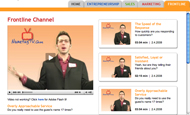 How are you branding YOUR service?
How are you branding YOUR service?
Tune in to The Frontline on NametagTV.com.
Watch video lessons delivering memorable unforgettable service!

 Forget yourself and submit to the other person.
Forget yourself and submit to the other person.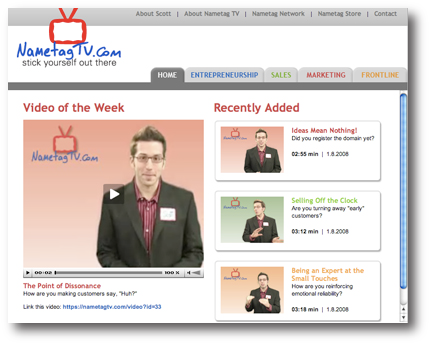
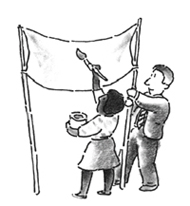 One of the primary tasks of Growing Bigger Ears is to guide the conversation into focus.
One of the primary tasks of Growing Bigger Ears is to guide the conversation into focus. 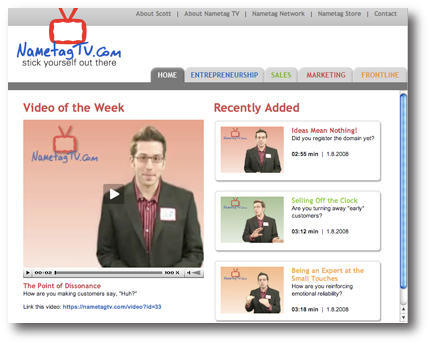
 Framing is everything.
Framing is everything. Enjoy this post?
Enjoy this post? Companies who GET talked about GET business.
Companies who GET talked about GET business. Are you a friend of
Are you a friend of  Your first impression is only 1/3 of the battle.
Your first impression is only 1/3 of the battle.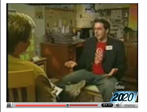 Are you the luckiest person you know?
Are you the luckiest person you know? People say sorry WAY too often.
People say sorry WAY too often.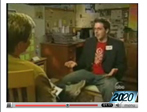 Are you the luckiest person you know?
Are you the luckiest person you know?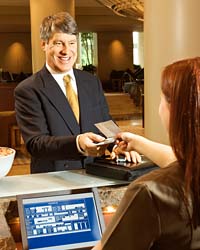 Your customers are tired.
Your customers are tired.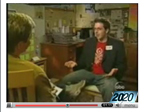 Are you the luckiest person you know?
Are you the luckiest person you know?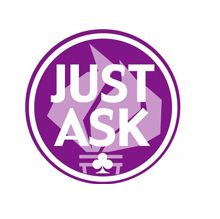 Sales calls.
Sales calls. Are you the luckiest person you know?
Are you the luckiest person you know? I pushed my shopping cart up to the counter.
I pushed my shopping cart up to the counter. * * * *
* * * *